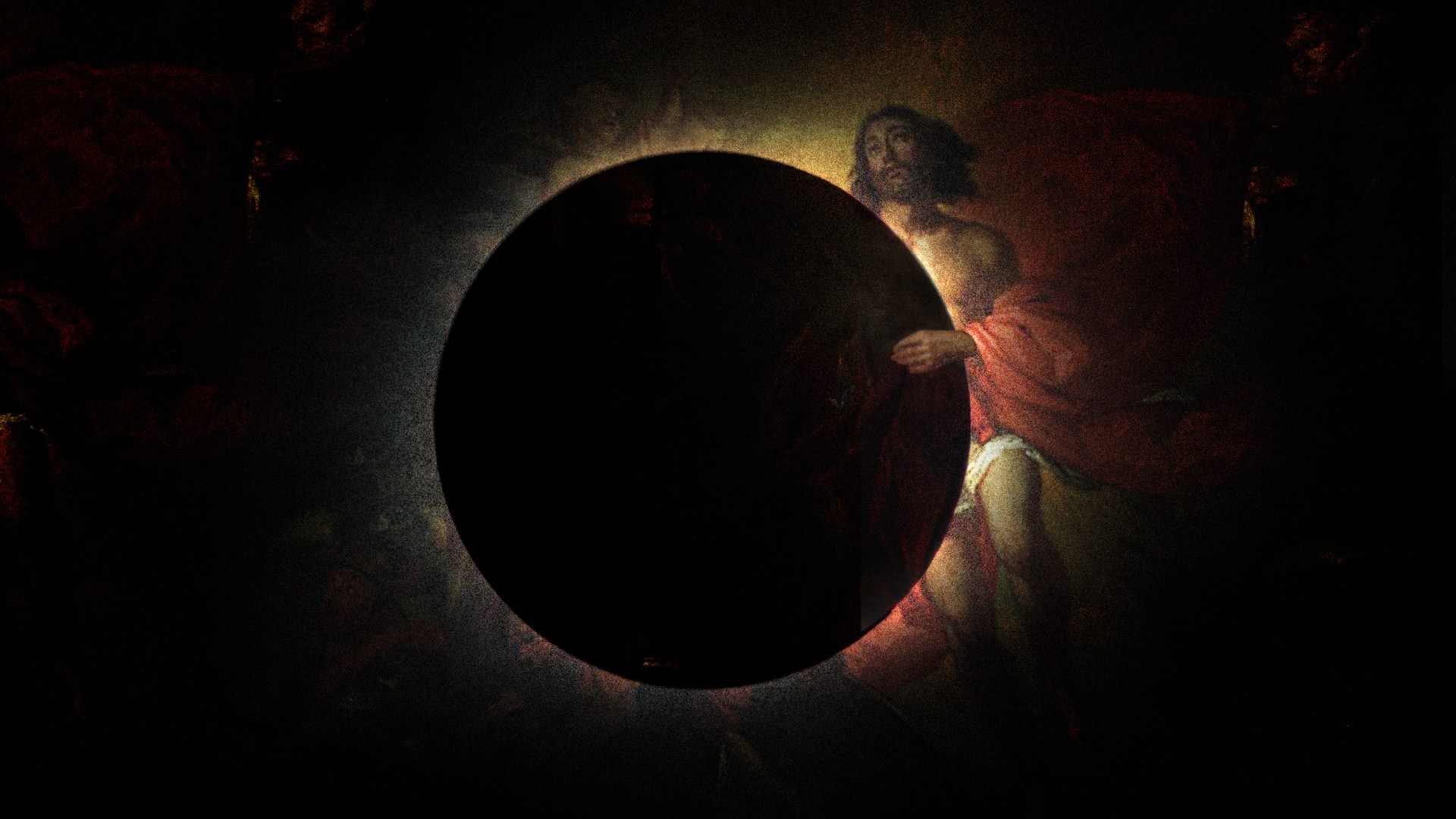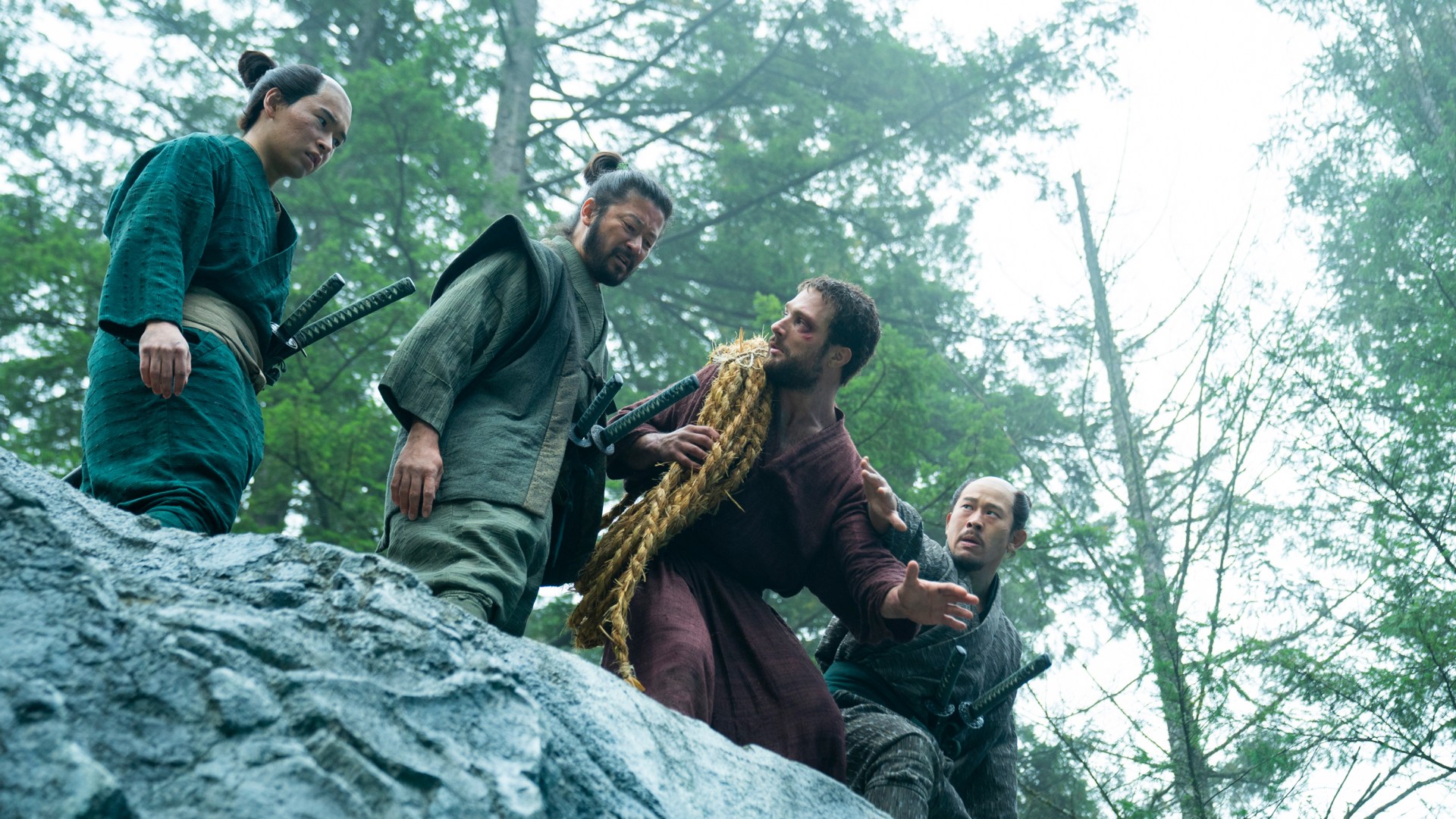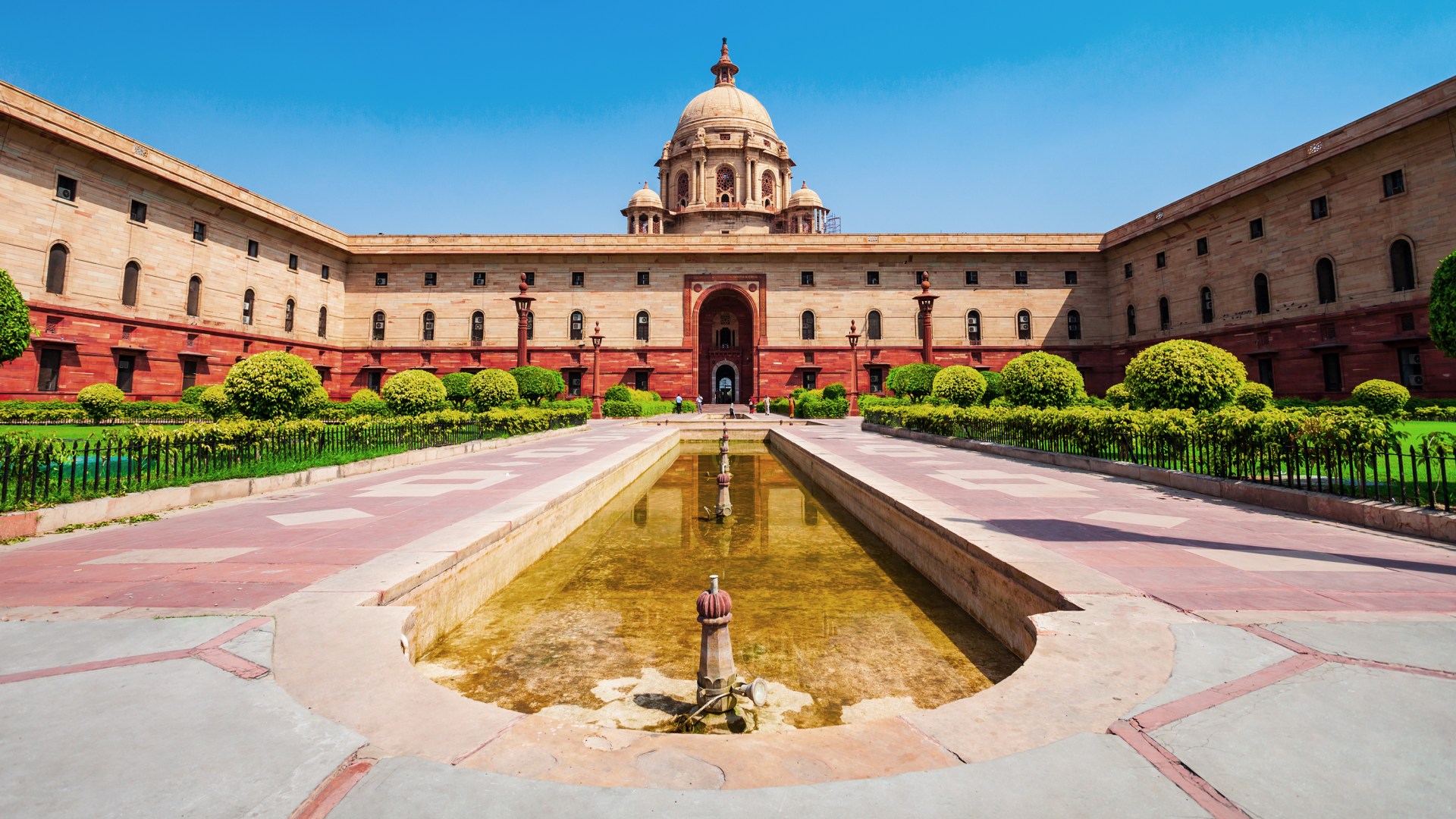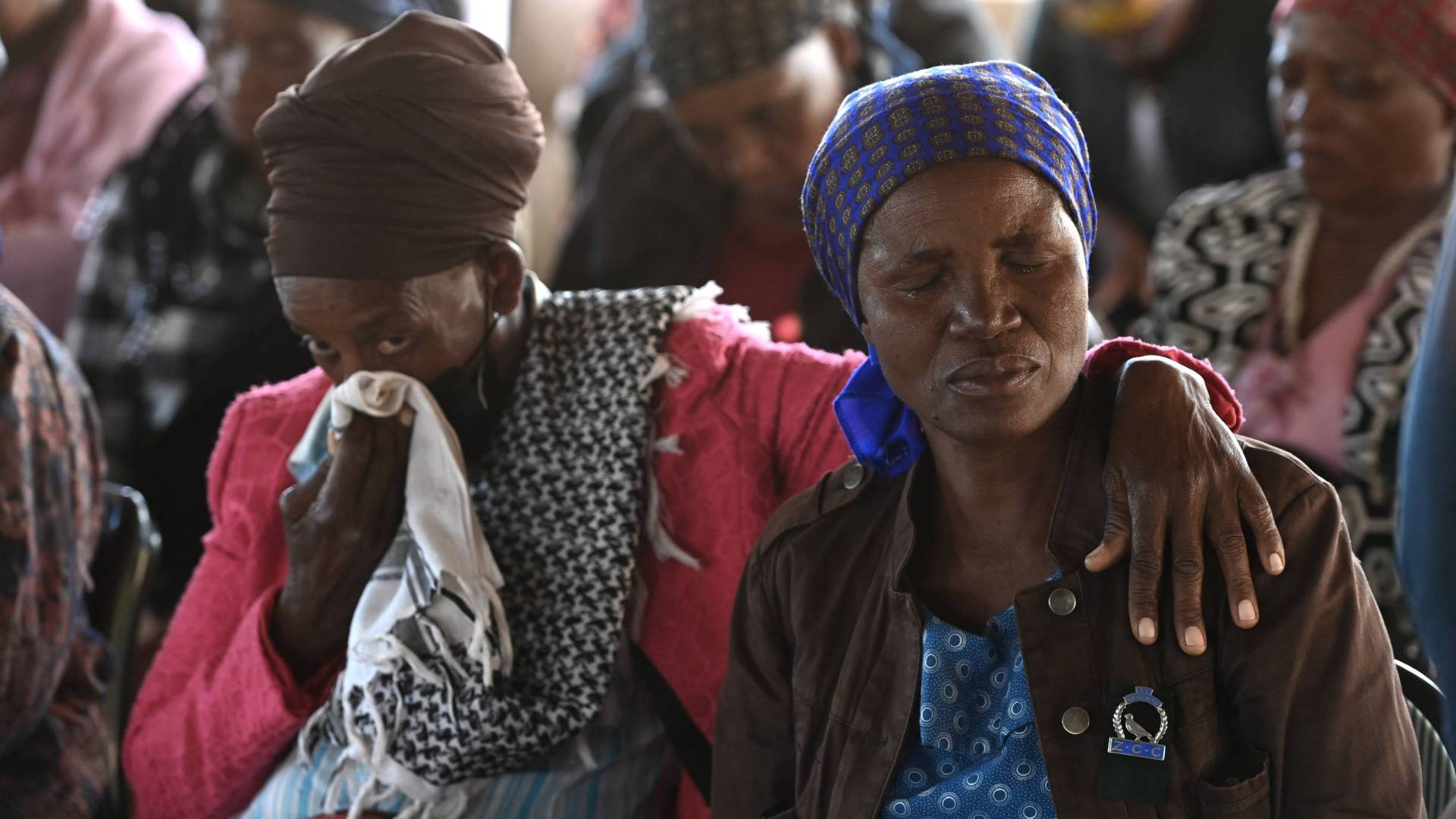At the climax of the crucifixion story, darkness comes over the land. Jesus, crowned with thorns, cries out. The earth quakes; the temple curtain is ripped in two. God’s moment of greatest love seems like defeat: a fissure between heaven and earth. But, the Gospels hold, this isn’t the end of the story. The darkness ends, and Sunday morning comes. The stone in front of the grave is rolled away. “Do not be afraid,” an angel declares. “He has risen.”
I’ve often wished I had been there to see this cosmic event with my own eyes. To witness it. To know beyond a shadow of a doubt this was the Son of God. Alas, I wasn’t. I’ve seen no visible stone rolled back nor angelic appearances to light my shadowy doubts or fill those tenacious cracks of spiritual night.
But I have seen a total solar eclipse.
I witnessed the eclipse in 2017, camping in the Smoky Mountains. It’s easy to describe the events leading up to it: the eight-hour drive, the worry about clouds, the marshmallows, mosquitos, and building excitement. But how to describe when the moment hit?
Here are some words I wrote down: wind, cold, 360-degree sunset, crickets, stars, the end of the world.
You see it coming. There’s a shadow, a hundred miles wide, racing toward you, faster than thought. And then it hits. In my memory, it’s like plunging under water. The sound all changes, with a swoosh, like in movies. And the light—it’s not water you’re swimming in. It’s liquid metal. Everything silver, platinum, bizarre. The sun is gone, replaced by an ink-black pupil surrounded with a wild white iris of solar atmosphere.
“Or a morsel of bone,” writes author Annie Dillard in her essay “Total Eclipse.” “I pray you will never see anything more awful in the sky.”
Awful in all the senses of the word. In Scripture, when people encounter angels, they respond with terror and worship. A total solar eclipse is the same. Indeed, I’ve read that in the year 840, Emperor Louis of Bavaria saw the world plunged into eclipse for five long minutes and died of fright. In Syria, one of the earlier records of an eclipse, about 1223 before Christ, is accompanied by a note. It says, “Two livers were examined: danger.”
To experience a total eclipse is to cry out, to feel the earth shake, to feel a fissure between heaven and earth. But also to be full of awe.
In 1806, a condemned criminal, brought from his dungeon to witness the eclipse, raised his manacled arms to the sky.
“There seems an instinctive sense … akin to awe … whispering to our spirits,” wrote James Fenimore Cooper in reaction to that same eclipse. “Never have I beheld any spectacle which so plainly manifested the majesty of the Creator, or so forcibly taught the lesson of humility to man.”
My memory struggles to hold the totality of it all. I know my mouth hung open, overcome.
And then the sun comes back again. A sunrise in midday. The great stone in the sky rolled away, and light returned.
Some might object that any parallels between the events of Easter and the events of an eclipse go too far. What mystery is there in something I can explain to children with a bright flashlight and supplies from Walmart?
A quarter-inch ball of Play-Doh can, when aligned just right, represent the moon and cast a small shadow over a one-inch marshmallow earth about 30 inches away. Even if you want to get into the complicated orbital mechanics that make predicting eclipses a graduate-level mathematics exercise, we understand how the moon’s orbit is tipped, like a gyrating hula hoop, relative to the earth’s. We can calculate the sun’s small tugs that make that hoop precess like a top, compute its rocking like a child’s circus mobile.
Nothing particularly extraordinary: just a 2,200-mile-wide rock blocking some light. No mystery here: just an 80-million-trillion-ton orb of iron and silicon swinging between us and our life-giving star at 2,300 miles per hour.
I am reminded of Moses, when he climbed Mount Sinai to learn God’s laws and asked to see God’s glory. God allowed Moses to glimpse just his back as he passed by—face in full eclipse. When Moses returned, the Scriptures say, his face was radiant from even this obscured glance.
Eclipses have no practical benefit. They have nothing to add to crop production or most modern scientific studies. They seem to be a chance alignment, a coincidence of a moon 400 times smaller and also 400 times closer than our sun. In fact, in a few hundred million years, the moon will have receded far enough from the earth that total solar eclipses will no longer happen.
And yet, for now, every couple of years (for a narrow strip at least somewhere on the earth), they do. In my years as an astronomer, the more I learn of this delicate dance, with its precessing nodes and pirouetting axes, the more, I realize, my face begins to glow.
“God laughs and plays,” David James Duncan wrote. And Carl Sagan, for all his agnosticism, was right when he said, “We know we are approaching the greatest of mysteries.”
Still, I approach with caution. The number one rule of solar-eclipse watching is to not look directly at the sun. Except during those few moments of complete totality, you need to use specially designed eclipse glasses that block 99.99 percent of the light or use the reflected light of a pinhole camera, which effectively does the same.
There’s a similar theological truth. On that mountain God hid Moses in the crevice of a rock and covered him with his hand until he’d passed by. And me—where does God place me that I might glimpse his glory, except perhaps in the crevice of long shadows, like those cast by a rugged wooden cross?
“Every object near a star wears a cone of night,” writes astronomer Chet Raymo. “Near every star there is a ring of cone-shaped shadows that point into space like a crown of thorns. … Every particle of dust in the space of the solar system casts its own tiny pyramid of darkness.”
On a chalkboard I can draw lines and circles showing how the moon, earth, and planets carve narrow cone-shaped shadows in the sun’s light, 100 times taller than they are wide. How the part of the earth and the moon facing the sun are experiencing daytime, and as the earth spins into its pyramid of shadow, we experience night.
Night is a thorn we cannot escape; only from space can we see its sharpness.
In college I spent a significant amount of time pondering the problem of pain. I dove into apologetic, intellectual solutions, like the need for choice or freedom or contrast to bring out joy. Good in a classroom but weak in the face of real, lived pain. Why can a good God allow for all the suffering, all the evil that blankets this world? I still have no answers.
But I do have eclipses.
An eclipse is a reminder that shadows have tips and that night exists only in the narrow shafts of shadow. When we experience a total solar eclipse, we experience the very peak of the moon’s night, stroking the earth with the lightest brush of an ink-dipped feather. Blink and it’s done. But it’s enough to remind us of this gift: In space, night has edges. We live not in a universe of darkness but in a universe awash in light.
As Raymo adds, “Earth’s cone of night is the Paraclete that brings the gift of deep space and deep time.”
I do not know why, if God is loving, he tolerates evil. But I do know that, astronomically speaking, it takes night—real material darkness—to see. Without the narrow cracks of night in the sun’s encompassing light, we’d know nothing of distant galaxies, of forming stars. Earth and heaven are connected through the narrow night.
Job, brave enough to confront God in his pain, receives what I’ve long considered a not-so-comforting reply: “Where were you when I laid the earth’s foundation? … What is the way to the abode of light?” And yet, my friend Anna pointed out to me, Job responds with favor. God gave Job, apparently, exactly the answer he needed.
And I’ve been given an eclipse, a sliver of night, a fissure through which the universe shines. In the dark, in the tip of the moon’s shadow, I behold an abundance of mathematics, motion, and awe. The light of the world descends to darkness but then comes again—a hint of resurrection light.
Luke Leisman is a research professor at the University of Illinois Urbana-Champaign and blogs about astronomy in everyday life at Substack.

































